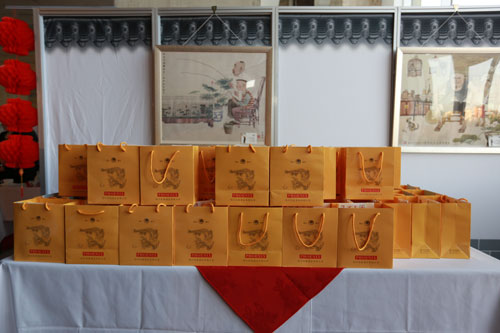Liquor culture as part of Chinese civilization

Liquor promotes culture and inspires literature and art
Liquor culture has been playing an essential role in the evolution of one of the world's ancient civilizations, China. The Book of Songs, the oldest existing collection of Chinese poetry and often considered to be the origin of Chinese literature and culture, was compiled more than 2,500 years ago. The works date from the 11th to 7th centuries BC, providing a panoramic view of those societies and cultures. The Book of Songs consists of 305 works, with rich liquor-related descriptions, as evidenced by the use of the character "liquor" 63 times. It contains a wealth of vivid narratives reflective of feelings and day-to-day lives of contemporary people, a testimony to liquor as an important element in ancient literature and culture.
Liquor is the product of human progress, and poetry is the result of human thought. Liquor and poetry are like inseparable twins. Liquor can inspire the words of poets and unlock their feelings, making their poems more creative and empathetic. In turn, poetry can add aesthetic and cultural appeal to liquor, giving it identity and character. Over time, the interplay and mutual reinforcement between liquor and poetry finally gave birth to China’s unique poem-liquor culture. In fact, this culture can be best interpreted with a saying: Liquor is a liquid poem; poem is the liquor of mind.
China's poem-liquor culture dates back a long way and is rich in philosophical insights. Li Po, a prominent poet of the Tang Dynasty, when intoxicated, was reputedly capable of creating a hundred poems. This is certainly an exaggeration, but there is no denying that liquor can inspire poets and poems can make liquor drinking more interesting. This is also why liquor is nicknamed "poem hook" in Chinese for its inspiring effect on poets. When reading ancient poems, you will often find yourself fascinated by imaginative lines written by poets, such as Li Po's "Raising my cup I beckon the bright moon. For he, with my shadow, will make three people”; Du Fu’s “Nothing can better console you than liquor; nothing can better unlock your feelings than a poem"; and Su Shi's "When will the moon be clear and bright? With a cup of liquor in my hand, I ask the clear sky”. On the surface, these poems speak of liquor, but between the lines are the mental states of the writers, their reflections on society, and advice on how to still one’s soul in a bustling society.
Drinking liquor can immerse artists in a tipsy state that will trigger a surreal intoxicated feeling. Liquor to them is a stimulant and catalyst for creation. It is said that the Lantingji Xu, a very famous semi-cursive calligraphy work by Wang Xizhi, was completed on a whim when drunk. Upon recovering from the hangover, he tried to reproduce it, but no duplicate was comparable to the original. Zhang Xu, another famous calligrapher of the Tang Dynasty, was an unscrupulous man who would get drunk at every meal with liquor. One day after he became inebriated, he used his hair as a brush to perform his art—every stroke demonstrated a God-given talent and creativity. Fu Baoshi, a distinguished modern painter, also could not live without liquor. When he collaborated with Guan Shanyue to create the painting The Land So Rich in Beauty for the Great Hall of the Pepole, he found himself unimaginative and uninterested in the job. The reason was that he could not get spirits due to the limited supply. Knowing this, Premier Zhou Enlai had premium spirits delivered to him, which excited him. With his strokes inspired by the spirits, he soon completed this imposing work of art. Chairman Mao also expressed his appraisal of the work in one of his lyric poems.
The liquor culture recognizes no borders. The great artist Van Gogh used to seek inspiration in pubs. One of his famous works, Agostina Segatori Sitting in the Café du Tambourin, was a portrait of the café owner. When he left Paris in search of serenity in the south, liquor remained part of his daily life and most of his money was spent in pubs. He demonstrated great empathy with other lost souls and only painting could release his emotions and deep passions. To Van Gogh, painting was his means of livelihood, but liquor served as inspiration for his art.
Ladies and gentlemen, today, happily we are gathered together for the Phoenix liquor tasting event. In the long history of human culture, liquor is not only part of a material existence, but is also a cultural symbol. The liquor culture, despite its national and temporal characteristics, is an inclusive culture that transcends borders. In today’s globalized and connected world, exchanges on liquor culture are more necessary than ever. So I sincerely invite you to visit Phoenix Distillery when in China.
Spirits can both lift and dampen one’s spirits. I hope this gathering of connoisseurs from east and west will find themselves in better spirits after tonight.
In closing, I hope you really enjoy this event. Thank you.
-

Symbols of Jiangsu (Pocket Edition)
Non-FictionSymbols of Jiangsu (Pocket Edition) selects the most representative and symbolic Jiangsu special cultural resources.
-

Symbols of China
Humanities & Social Science; Non-FictionSymbols of China examines those things that make China Chinese.



